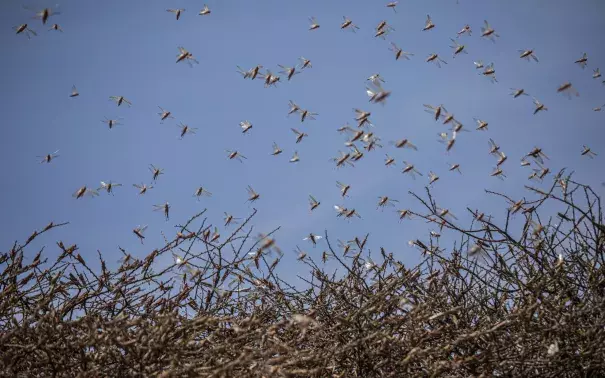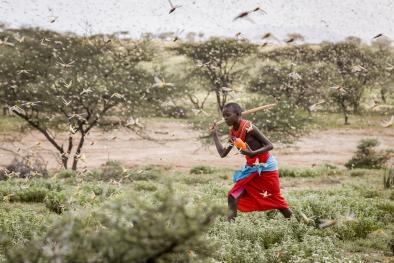Like a biblical plague, locusts swarm East Africa, laying waste to crops and livelihoods

Climate Signals Summary: Climate change is making extreme rainfall more common, like the heavy rains East Africa saw in 2019, which creates perfect breeding conditions for locusts. There is also growing evidence that climate change may be impacting an ocean circulation pattern known as the Indian Ocean Dipole, which can bring more frequent cyclones to the region, like the one that set the stage for the current locust crisis.
Article Excerpt: On a continent that has suffered repeated outbreaks of Ebola and is now fighting the coronavirus, the locusts may pose no less of a challenge. Hundreds of billions of them have conquered territory in at least eight countries, overwhelming governments and aid organizations while consuming crops and grazing land so rapidly that experts fear widespread famine.
Here in Somalia — where 2.6 million people are already displaced because of armed conflict and drought — no field or family has been spared.
...
Scientists blame a pair of 2018 cyclones in the Indian Ocean, a region they say is likely to experience more such storms as global temperatures rise.
The cyclones dumped unusually large amounts of rain on the locusts’ main breeding ground, a swath of the Arabian Peninsula known as the “Empty Quarter.”
That led to optimal breeding conditions. Locusts lay their eggs in the sand, and when that sand is moist, the eggs can hatch in as little as two weeks and the larvae can mature in as little as two more to start reproducing again. In just nine months and three rounds of breeding, the population exploded by a factor of 8,000.
From the Empty Quarter — which encompasses parts of Saudi Arabia, Oman, the United Arab Emirates and Yemen — the swarms crossed the Red Sea to the coast of Somalia in the summer of 2019 and laid more eggs there before carving a path of destruction west and south, deeper into Africa.
The storms of 2018 also reached Somalia, ending several years of drought and raising the hopes of Alleh and her neighbors in Beer for a lush growing season and a profitable harvest.
But by January, the locust swarms had damaged 100% of Somalia’s staple crops of maize and sorghum, according to the Food and Agriculture Organization of the United Nations.



